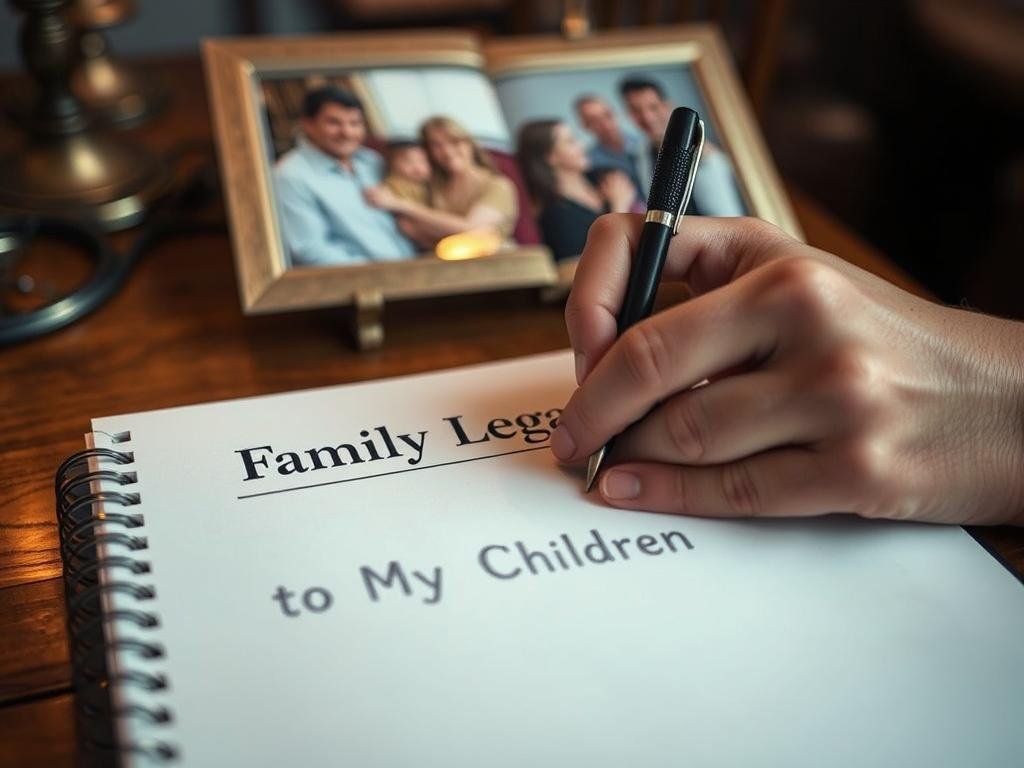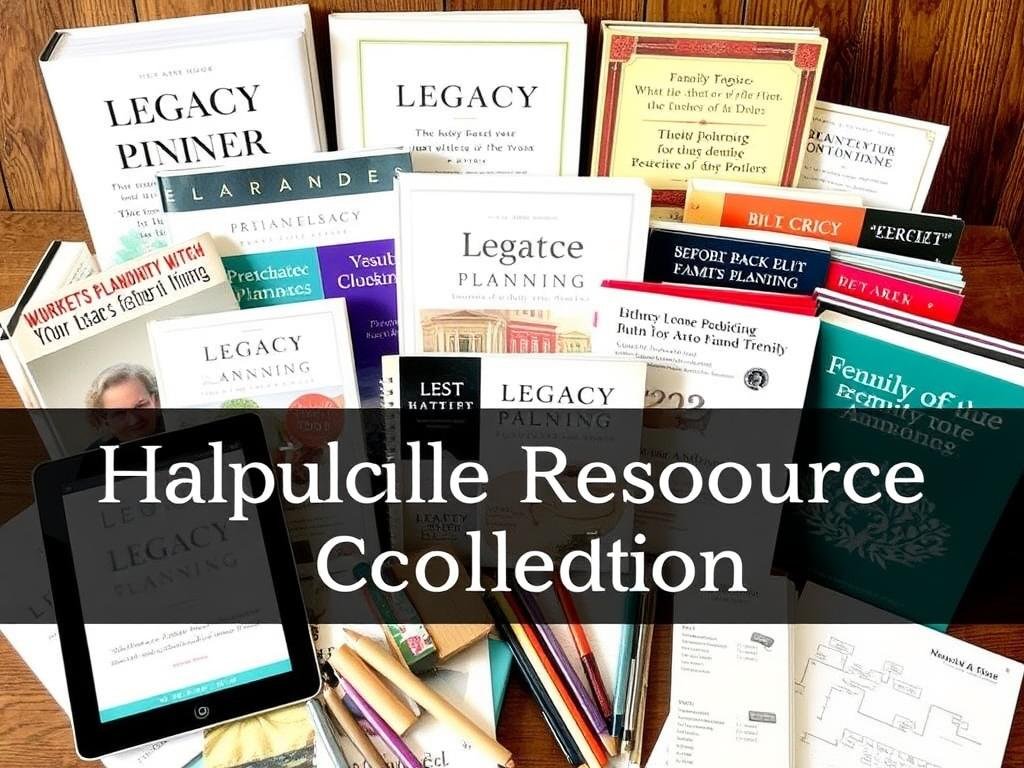As parents, we all want to leave something meaningful behind for our children. But what does a true legacy look like? Is it just about financial assets, or is there something deeper and more lasting we can pass on? The truth is, leaving a legacy for kids involves much more than money—it’s about transmitting your values, wisdom, and love in ways that will echo through generations.
Whether you’re just starting your family journey or watching your children raise their own kids, it’s never too early or too late to think about the imprint you’ll leave on future generations. This guide will walk you through practical steps to create a legacy that truly matters.
Defining What “Value” Really Means in Your Legacy
When we talk about leaving a legacy for kids, many people immediately think about financial inheritance. While financial security is important, true legacy planning encompasses three distinct dimensions:
Financial Legacy
This includes tangible assets like money, property, investments, and family heirlooms. While important, financial assets are just one piece of your legacy puzzle.
Emotional Legacy
The relationships, memories, and emotional connections you build with your children form the foundation of how they’ll remember you and shape their own approach to relationships.
Ethical Legacy
Your values, beliefs, life lessons, and the example you set daily contribute to the character your children develop and the principles they’ll live by.
Dr. Susan Madsen, family psychologist, notes: “Children inherit your actual words and actions far more than your intentions. The legacy you leave is built in everyday moments, not grand gestures.”
Before diving into specific strategies, take time to reflect on what values matter most to you. Is it education? Faith? Compassion for others? Financial responsibility? Your clarity about what matters will shape every other aspect of your legacy planning.
Step 1: Document Your Values and Life Lessons

The wisdom you’ve gained through life experiences is invaluable to your children. Unfortunately, many of these lessons are lost because they’re never properly documented. Here’s how to preserve your insights:
- Create an “ethical will” or legacy letter that expresses your values, hopes, and life lessons
- Record video messages sharing stories about important moments in your life and what you learned
- Start a legacy journal where you regularly write entries addressed to your children
- Create a family values statement that articulates what your family stands for
“The greatest legacy one can pass on to one’s children and grandchildren is not money or material things accumulated in one’s life, but rather a legacy of character and faith.”
Start Your Legacy Journal Today
Download our free Legacy Journal Template with 52 prompts to help you document your values, stories, and wisdom for your children.
Step 2: Create a Comprehensive Estate Plan

While your legacy is more than money, responsible financial planning ensures your children benefit from your hard work and aren’t burdened with confusion or conflict after you’re gone.
Essential Estate Planning Documents
- Will: Specifies how your assets will be distributed and names guardians for minor children
- Trust: Provides more control over how and when assets are distributed to beneficiaries
- Power of Attorney: Designates someone to make financial decisions if you’re unable
- Healthcare Directive: Outlines your medical care preferences if you can’t communicate
- Beneficiary Designations: Ensures retirement accounts and insurance policies transfer correctly
- Digital Asset Plan: Provides access to your online accounts and digital properties
Estate planning attorney Maria Rodriguez explains: “Many parents put off creating a will because it feels overwhelming or morbid. But having these documents in place is one of the greatest acts of love you can show your children—it protects them from unnecessary stress during an already difficult time.”
Did you know? Nearly 68% of Americans don’t have a will. Without one, state laws determine who raises your children and how your assets are distributed—often not according to your wishes.
Step 3: Share Your Family History and Stories

Research shows that children who know their family history develop stronger identities and greater resilience. Your family stories provide context for who they are and where they come from.
Creative Ways to Preserve Family History:
- Create a family tree together and discuss the people on it
- Record interviews with older family members about their lives
- Compile a family cookbook with recipes and the stories behind them
- Make a digital archive of family photos with descriptions
- Visit places that are significant to your family history
- Start family traditions that connect to your heritage
Dr. Marshall Duke, psychologist at Emory University, found that children who know more about their family narratives show higher levels of emotional well-being. He recommends sharing three types of family stories:
Ascending Narratives
“We started with nothing and worked hard to build what we have.”
Descending Narratives
“We had everything but lost it through challenges or mistakes.”
Oscillating Narratives
“Our family has had ups and downs but we’ve stuck together through it all.”
Step 4: Teach Financial Literacy and Responsibility

Financial wisdom is a crucial part of your legacy. Children who understand money management are better equipped for independence and can preserve the financial legacy you leave them.
Age-Appropriate Financial Education:
| Age Group | Concepts to Teach | Activities |
| Ages 3-5 | Basic counting, saving, waiting | Piggy bank, counting games, simple choices |
| Ages 6-10 | Earning, saving for goals, giving | Allowance system, savings jar, charity jar |
| Ages 11-14 | Budgeting, comparison shopping, compound interest | Budget for small purchases, savings account, research projects |
| Ages 15-18 | Working, banking, credit, investing basics | Part-time job, checking account, stock market game |
| College/Young Adult | Debt management, investing, insurance, taxes | Student loan planning, Roth IRA, tax return assistance |
Financial advisor James Chen recommends: “Beyond teaching the mechanics of money, share your money values and mistakes. Did you learn hard lessons about debt? Did saving early make a difference in your life? These personal stories make financial concepts meaningful.”
Resource Tip: Many banks offer free financial literacy programs for children. Check with your local branch about kid-friendly savings accounts and educational materials.
Step 5: Create Meaningful Family Traditions

Family traditions create a sense of belonging and continuity. They become touchstones that children carry into adulthood and often pass on to their own families.
Types of Traditions to Consider:
Daily Traditions
- Family meals
- Bedtime rituals
- Morning routines
- Gratitude practices
Special Occasion Traditions
- Birthday celebrations
- Holiday customs
- Anniversary rituals
- Achievement recognitions
Annual Traditions
- Family vacations
- Seasonal activities
- Family reunions
- Year-end reflections
Child psychologist Dr. Lisa Damour explains: “Traditions don’t have to be elaborate or expensive. What matters is consistency and meaning. Even simple rituals like Sunday pancakes or summer camping trips create a family identity that children internalize.”
“Traditions are the stories that families write together.”
When creating new traditions, involve your children in the planning. Traditions that incorporate their interests and ideas are more likely to be embraced and continued.
Step 6: Model the Values You Want to Pass On

Children learn more from what you do than what you say. Living your values consistently is the most powerful way to ensure they become part of your legacy.
Key Areas Where Modeling Matters:
- Relationships: How you treat your spouse, family members, and friends
- Work Ethic: Your approach to responsibilities and challenges
- Compassion: How you respond to others’ needs and suffering
- Integrity: Keeping your word and standing for what’s right
- Learning: Your curiosity and commitment to growth
- Resilience: How you handle setbacks and disappointments
Michelle Mitchell, parenting expert, observes: “When parents take responsibility for their own growth and healing, they introduce their children to courage. We help them understand that parenting is about leaving a legacy, and our decisions can be made with the future in mind.”
What if I didn’t have good models growing up?
Many parents worry about repeating negative patterns they experienced. The good news is that awareness is the first step to change. You can consciously choose different paths, seek support through books, therapy, or mentors, and be open with your children about your journey of growth.
Remember that modeling also includes how you handle mistakes. Admitting when you’re wrong and making amends teaches children accountability and growth mindset—valuable legacy traits.
Step 7: Manage Your Digital Legacy

In today’s digital world, much of our lives—photos, videos, social media, emails—exists online. Planning for your digital legacy ensures these memories and assets aren’t lost.
Digital Legacy Planning Essentials:
Digital Assets to Inventory
- Photos and videos
- Email accounts
- Social media profiles
- Digital subscriptions
- Online financial accounts
- Digital currencies
- Websites and domains
- Digital creative works
Digital Legacy Steps
- Create a digital asset inventory
- Document access information securely
- Appoint a digital executor
- Set up legacy contacts where available
- Back up important memories offline
- Specify wishes for each account
- Update your plan regularly
Tech journalist and digital legacy expert Evan Carroll advises: “Most people have thousands of digital photos but no plan for preserving them. Consider creating annual photo books, regularly backing up to external drives, and teaching family members how to access your cloud storage.”
Important: Digital assets with financial value (cryptocurrency, online businesses, valuable domains) should be included in your formal estate plan with clear instructions for access and transfer.
Your 10-Point Legacy-Building Checklist

Use this checklist to track your progress in building a meaningful legacy for your children:
10 Legacy-Building Actions to Complete This Year
- Create or update your will and estate plan
- Write a legacy letter expressing your values and hopes
- Record or document at least three significant family stories
- Establish a new meaningful family tradition
- Set up a system for organizing and preserving family photos
- Have an age-appropriate money conversation with your children
- Create a secure record of passwords and digital account information
- Schedule regular one-on-one time with each child
- Make a family values statement together
- Start a legacy journal or video series for your children
Creating Your Family Values Statement

A family values statement articulates what your family stands for and provides a north star for decision-making. Creating one together can be a powerful legacy-building activity.
Template for Your Family Values Statement
Our Family Name: _________________
Our Purpose: What do we believe is our family’s purpose? What difference do we want to make?
Our Core Values: List 5-7 principles that are most important to your family (e.g., honesty, kindness, education, faith, hard work)
How We Treat Each Other: What standards of behavior do we commit to within our family?
How We Treat Others: What principles guide our interactions with people outside our family?
Our Approach to Challenges: How do we handle difficulties and setbacks?
Our Traditions: What regular practices help us live our values?
Our Signature: Have all family members sign and date
Family therapist Jennifer Miller suggests: “Revisit your values statement annually, perhaps on New Year’s Day or a family anniversary. As children grow and family circumstances change, your values statement can evolve while maintaining core principles.”
Resources for Your Legacy Journey

Free and Affordable Estate Planning Tools
- FreeWill: Online will creation tool with basic estate planning
- Cake: End-of-life planning platform including digital legacy
- Tomorrow: Mobile app for creating legal wills and trusts
- Willing: Simple will creation with state-specific guidance
- Legal Aid Societies: Many offer free estate planning for eligible individuals
Books on Legacy Planning
Ethical Wills
“Ethical Wills: Putting Your Values on Paper” by Barry K. Baines
Family History
“The Book of Myself: A Do-It-Yourself Autobiography” by Carl and David Marshall
Financial Legacy
“Family Money: 5 Steps to Teach Your Kids About Money and Create a Lasting Legacy” by Chad Willardson
Start Your Legacy Planning Today
Join our community of intentional parents creating meaningful legacies. Get weekly tips, templates, and resources delivered to your inbox.
Your Legacy Journey Starts Now

Leaving a legacy for kids isn’t a one-time task but a lifelong journey of intentional living and loving. The steps you take today—whether writing down family stories, teaching values through your actions, or planning for your children’s financial future—create ripples that extend far beyond your lifetime.
Remember that legacy building isn’t about perfection. It’s about authenticity, growth, and connection. Your willingness to share both your successes and failures, your wisdom and your questions, creates a rich inheritance that money alone could never provide.
As you implement the strategies in this guide, be patient with yourself and celebrate small steps. Each intentional choice you make contributes to the beautiful, complex legacy you’re creating for generations to come.
“The greatest legacy anyone can leave behind is to be remembered for the positive difference they made in the lives of others.”
Ready to Take the Next Step?
Download our comprehensive Legacy Planning Worksheet to start documenting your values, stories, and wishes for your children.

